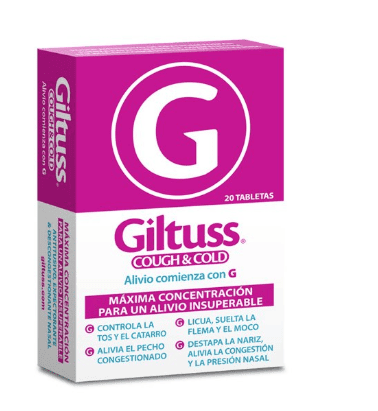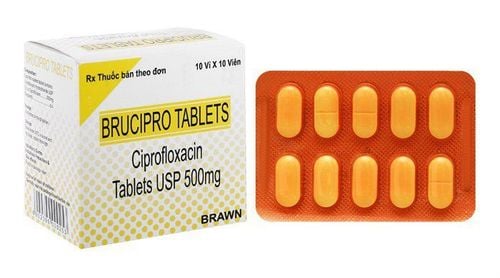This is an automatically translated article.
Negacef 750mg contains the main ingredient is Cefuroxim sodium equivalent to Cefuroxim 750mg. The drug is effective in the treatment of infections caused by susceptible bacteria. The following article will provide you with useful information about this drug in order to get the most out of Negacef.
1. What are the uses of Negacef 750mg?
The ingredient Cefuroxime in the drug is known as a broad-spectrum semi-synthetic antibiotic, belonging to the cephalosporin group, sodium salt injection, oral axetil ester. Cefuroxime axetil is a prodrug of cefuroxime, which has little antibacterial activity when it is not hydrolyzed to cefuroxime in the body after absorption.Cefuroxime has antibacterial activity by inhibiting bacterial cell wall synthesis by binding to essential target proteins (penicillin-binding proteins). Resistance can be caused by bacteria secreting cephalosporinase enzymes, or by alteration of penicillin-binding proteins.
Cefuroxime has effective and very specific antibacterial activity against many common pathogens, including beta-lactamase/cephalosporinase-producing strains of both gram-positive and gram-negative bacteria.
Thanks to the above effects, Negacef 750mg is indicated in the following cases:
Treatment of severe infections of the lower respiratory tract: acute and chronic bronchitis, bacterial pneumonia, lung abscesses and infections Post-operative lung, sinusitis, tonsillitis, pharyngitis. Severe urinary tract infections: pyelonephritis, cystitis, uncomplicated bacteriuria. Skin and soft tissue infections: erysipelas, peritonitis, wound infections. Musculoskeletal infections: osteomyelitis, septic arthritis. Obstetric and gynecological infections: pelvic inflammatory diseases. Uncomplicated gonorrhea In addition, it is also indicated in the treatment of sepsis, meningitis and prophylaxis of infection during surgery. On the other hand, patients with hypersensitivity to cephalosporins will not be prescribed.
2. Dosage and usage of Negacef 750mg
2.1. Dosage Dosage for adults:
In most infections: IM or IV 750 mg 3 times/day (8 hours apart), administered for 5-10 days. Bone and joint infections: 1.5g IV every 8 hours. Severe infections or less susceptible organisms: 1.5g IV every 6 or 8 hours. Meningitis: 3g IV every 8 hours. Uncomplicated gonorrhea: 1.5g dose, can be divided into two doses of 750 mg IM at different sites. Dosage for prophylaxis purposes: Prophylaxis of surgical infections: 1.5g IV 30 minutes - 1 hour before surgery. Add 750 mg IM or IV every 8 hours up to a maximum of 24-48 hours later.
Patients with renal impairment: Dosage is adjusted according to creatinine clearance
Creatinine clearance above 10-20 ml/min: 750mg x 2 times/day. Creatinine clearance less than 10 ml/min: 750 mg x 1 time/day. Dosage in children > 3 months:
In most infections: 30-100 mg/kg/day, divided into 3-4 times. Serious infections: greater than 100 mg/kg/day but not to exceed the adult dose Bone and joint infections: 150 mg/kg/day, equally divided every 8 hours. Meningitis: 200-240 mg/kg/day IV, divided into 3-4 times. After 3 days when there is an improvement, the dose can be reduced to 100mg/kg/day. Dosage in neonates:
In most infections: 30-100 mg/kg/day in 2-3 divided doses. Meningitis: initial dose of 100 mg/kg/day IV, may be reduced to 50 mg/kg/day IV when clinically indicated. 2.2. How to use Negacef 750mg is used by deep intramuscular injection and intravenous injection.
For deep intramuscular injection, add 3ml of distilled water for injection into the vial. For intravenous injection add at least 6ml of distilled water for injection to the vial. Shake gently to disperse the powder, resulting in a suspension for intramuscular injection. 2.3. Management of missed dose/overdose Negacef medicine is very unlikely to miss a dose because it is carried out by medical staff. However, cases of drug overdose have been recorded with manifestations such as nausea, vomiting, diarrhea... even convulsions, increased neuromuscular excitability reactions.
In this case, it is necessary to protect the patient's airway, support ventilation and give fluids. If seizures develop, discontinue the drug and institute anticonvulsant therapy.
3. Negacef side effects
Some side effects of Negacef such as: vomiting, abdominal pain, enteritis, vaginitis, kidney & liver dysfunction, anemia, bleeding, epilepsy...
Before prescribing the drug, the doctor always consider the benefits and effectiveness that Negacef brings, but still inevitably some unwanted effects. Therefore, when unusual symptoms are present, especially when a severe allergic reaction occurs with accompanying signs such as severe dizziness, difficulty breathing, rash, anxiety, cognitive impairment , respiratory failure and coma, the patient should immediately notify the doctor or nurse for immediate medical intervention.
4. Drug interactions Negacef 750mg
There have been reports of drug interactions Negacef 750mg with some drugs such as: strong diuretics, Aminoglycosides, Probenecid...
This situation reduces the effect of Negacef or increases the effect of the effects. unexpected. Tell your doctor about all other medicines you are taking including over-the-counter medicines, vitamins, prescription drugs, and herbal products. Do not start, stop or change the dose of any medicine without your doctor's consent.
5. Be careful when using Negacef
Use caution when using the drug for some subjects with a history of digestive diseases, colitis, children under 3 months old... Cephalosporin antibiotics are considered safe for pregnant women. However, to use drugs safely, patients should only take them when absolutely necessary. The drug can be excreted in milk, so women who are breastfeeding should use caution when taking the drug. Prolonged use of the drug can lead to the risk of drug resistance, which should be discontinued when necessary.













